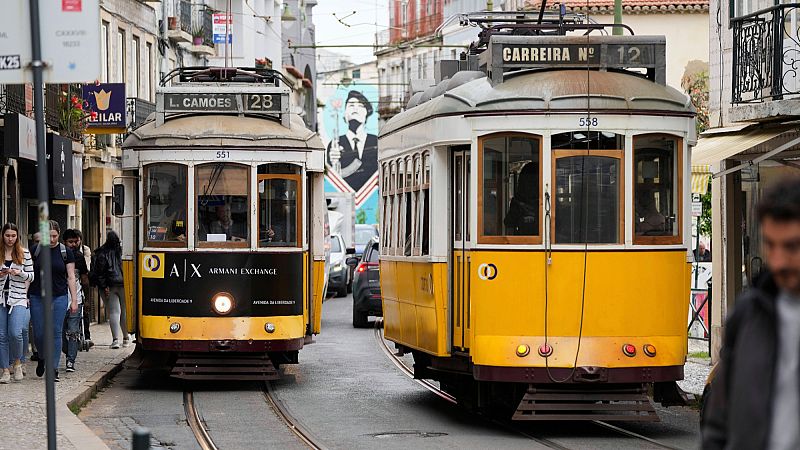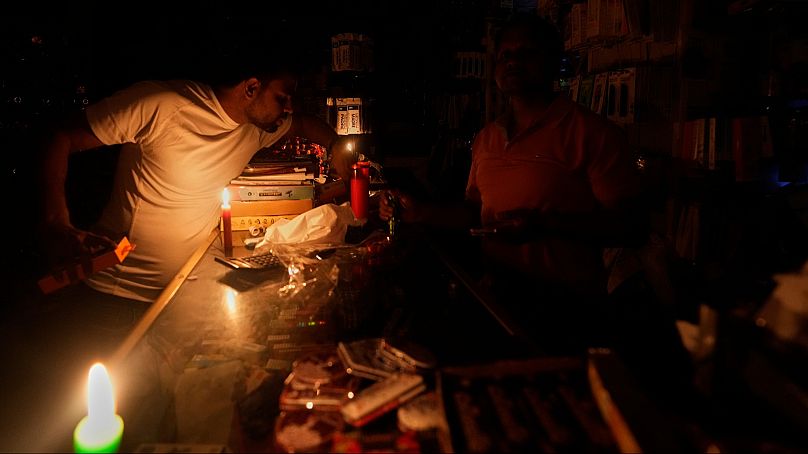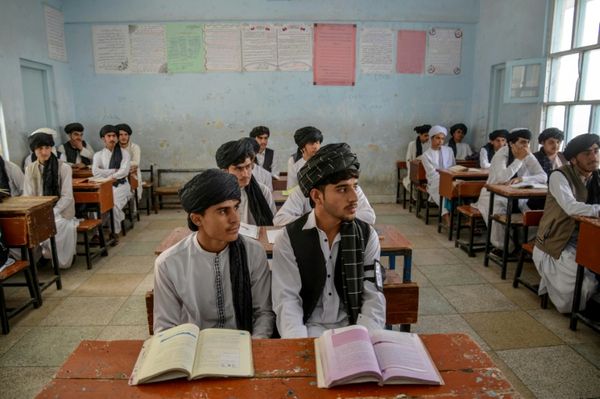
States of emergency throughout Spain and Portugal are being lifted on Tuesday, except in Valencia, as the Iberian Peninsula starts to regain power after an unprecedented outage on Monday.
The outage hit Spain, Portugal, and parts of France just after noon on Monday, according to data from the European Network of Transmission System Operators for Electricity (ENTSO-e).
Dan Jorgensen, the EU Commissioner for energy and housing, said on X on Tuesday morning that the energy situation in Spain and Portugal is back to normal, noting that this incident was "the most severe for almost two decades in Europe".
While investigators are still trying to figure out the cause of the mass blackout, experts say restarting the grid after an outage is tricky and would have to strike a good balance or risk bringing about another one.
So, how does the re-energising process work, and when can those living in the Iberian Peninsula expect full power to come back?
'Suddenly there’s a flurry of alarms'
The transmission grid is the "backbone" of a country's electricity system, according to Spain’s grid operator Red Electrica. It connects power generation stations to large consumers, distribution points, and other national energy production.
The grid is needed to transmit the energy created by electricity generation plants from location to location “efficiently and safely”.
Spain’s transmission grid has over 45,000 km of high-voltage line circuits, more than 700 substations, 600 bays, and over 200 transformers.
Portugal’s grid, although smaller, has 9,661 km of circuits, and roughly 77 per cent of its energy produced on Tuesday was from renewables like solar and wind, according to data from Portuguese energy company, Redes Energeticas Nacionais (REN).
Paul Cuffe, an assistant professor of electrical and electronic engineering at the University of College Dublin (UCD), said power grids are often synchronised or interconnected, which means that if "something untoward were to happen with the generator in Madrid, it can immediately be felt in Barcelona or Lisbon," he told Euronews Next.
System operators that control the power grid are looking to maintain the balance between how much power the grid supplies and how much is being consumed, he said.
To hit that balance, operators stay around the 50 hertz mark, he continued. The metric can tick slightly up or down without causing a risk of a blackout.
The failure of the Iberian grid likely happened quickly and unexpectedly, he said.
"Suddenly there’s a flurry of alarms, [a system operator] blinks and looks at the display, where, for the last five years, there’s been no hint of trouble… and [thinks] what on Earth was that?" Cuffe said.
A balancing act
After a blackout, the challenge of getting the grid back online starts.
A spokesperson for Eurelectric, the sector association that represents Europe’s energy industry, said that the grid has to do what’s called a "black start," where it uses "generation assets that don’t require grid electricity to be started" to get the power back on.
In the case of the Iberian blackout, the association’s spokesperson continued, this came in the form of hydropower, but can also be done with diesel or gas.
The electricity from these alternative sources is then fed into the grid and used to bring essential services, like hospitals or defense sites, back online.
From there, the energy is "slowly ramped up" and is "carefully matched against additional demand brought onto the system," Eurelectric continued.
"If the balancing is not nearly perfect, it can cause another outage".
The role of renewables
In 2024, Red Eléctrica announced that 56 per cent of Spain’s power was produced by renewable energy.
The grid operator also confirmed on April 16 this year that they hit 100 per cent renewable energy supply.
On Tuesday, data from REN showed that at 6 pm CET, 77 per cent of the energy generated in Portugal was from renewables.
The introduction of renewables like solar and wind to the grid, coupled with new consumption patterns and big consumers, makes the grid system more "complex" to balance, REN said.

ENTSO-e warned earlier this month that solar energy could be overproduced as the good weather starts to come.
To mitigate this, ENTSO-e said that transmission system operators would be setting up dedicated specialty teams to manage the power supply, through more flexibility with resources and information sharing over borders.
Euronews Next reached out to Spain’s Red Electrica and REN to ask about what preparations were taken in response to ENTSO-e’s warning, but did not receive an immediate reply.
Cuffe said that while the role of renewables is "relevant," he cautions that power grids have failed long before the inclusion of these new types of energy.
"It would be wrong to jump the gun. But it would [also] be wrong for me to take an overly defensive position for how dare they besmirch renewable energy," he said.
"That grid was at a very high renewable penetration, and that could be relevant".
What happens next?
Eurelectric said that as the power comes back, a safety check needs to be done to make sure nothing along the grid’s power line was damaged or could lead to a further blackout.
Euronews Next also asked Red Electrica and REN whether these safety checks have taken place, but did not receive an immediate reply.
The grid will eventually come back to normal rates of power, Eurelectric said, and the time it will take depends on the severity and size of the outage.
There’s still other investigations to come.
Spanish Prime Minister Pedro Sanchez and his Portuguese counterpart, Luis Montenegro, have asked the European Commission to deliver an independent report about the cause of Monday’s blackout.
A Commission official told Euronews that it is not up to them to conduct the investigation. It will be led by a transmission system operator (TSO) from a member state that isn’t connected to the incident and will have members from Spain, Portugal, and France on a panel to contribute their expertise.
The panel will have up to six months to deliver a fact-finding report about the blackout that will explain the causes of the incident and a series of recommendations.
Luis Calama, a judge on Spain’s National Court, said that he will launch a preliminary investigation into whether the blackout may have been a cyberattack, despite many refutals by various government leaders that that is not the case.







